#dormition church
Photo
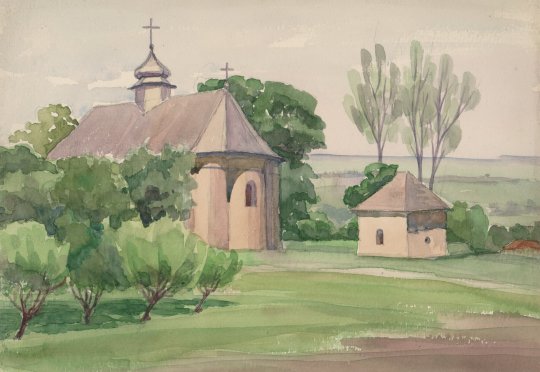
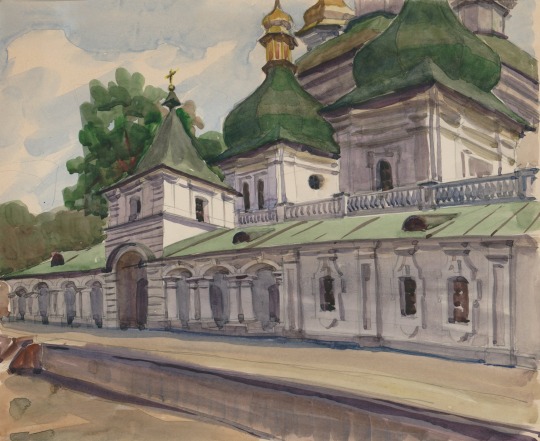
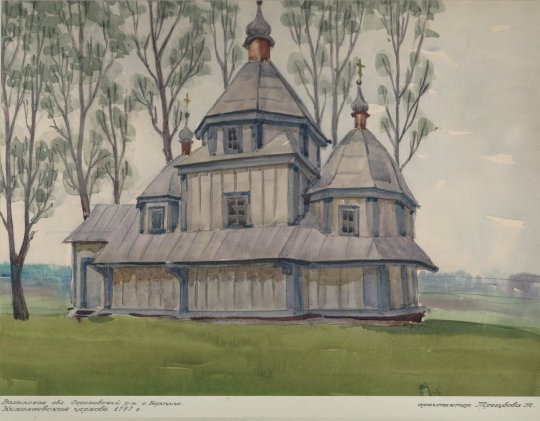
Ukrainian churches by Tetyana Trehubova, 1970
1. Dormition Church in the village of Krylos, Ivano-Frankivsk Region
2. Kyiv-Pechersk Lavra
3. St.Michael`s Church in the village of Borochyche, Volyn Region
#Tetyana Trehubova#1970s#Ukrainian art#Ukraine#church#Dormition Church#Krylos#Ivano-Frankivsk#Kyiv-Pechersk Lavra#Kyiv#St.Michael`s Church#Borochyche#Volyn#Ukrainian Architecture
80 notes
·
View notes
Video
Yelets 21 by Alexxx Malev
Via Flickr:
Russia. Yelets. Dormition Church, iconostasis
Елец. Успенская церковь, иконостас
#2016#church#city#dormition church#iconostasis#january#lipetsk oblast#russia#winter#yelets#город#елец#зима#иконостас#липецкая область#россия#успенская церковь#церковь#январь#flickr#russian tumblr#русский tumblr
1 note
·
View note
Text
Today is the day of orthodox Christmas, so I made something dear to heart (:
Day 45. Thief in law.

There barely any info about Voronia so there’s just real Russia yeah, nothing interesting.
Версия на православном, надеюсь оно хоть как-то читаемо хз. И с Рождеством Христовым братья и сестры!
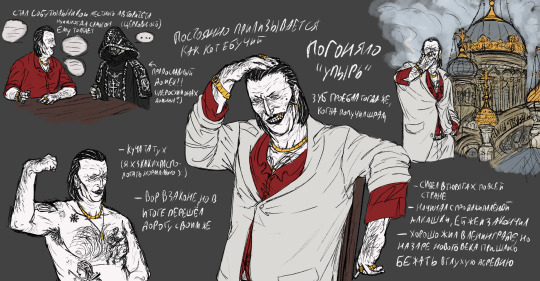
#fear and hunger#caligura#bearded Domek is pretty cool actually. I think#especially with that outfit dammn#btw that cool church is Saint-Petersburg’s Church of the Dormition of the Mother of God#I really didn’t know how to play out Caligura’s name yeah lol
50 notes
·
View notes
Text




The doors of caring do now open unto us,
O most blessed Theotokos,
So that hoping in you we shall not fail;
Through you we may be delivered from adversities,
For you are the salvation of the Christian faith.
#dormition#of#theotokos#necula#monastery#romania#eastern europe#orthodoxy#christian orthodox#orthodox christianity#christianity#church aesthetic#christian churches#churches of romania#feastday
9 notes
·
View notes
Text
Jerusalem, Israel
#jerusalém#israel#historical tourism#heritage tourism#mount Zion#mt Zion#Damascus gate#garden tomb#dome of the rock#Solomon’s temple#wailing wall#church of the holy sepulchre#Via Dolorosa#mount of olives#dormition abbey#jesus#christianity#muslim#crucifixion#resurrection#travel#travelfacts#tourism#worldfacts#naturaltourism
2 notes
·
View notes
Text
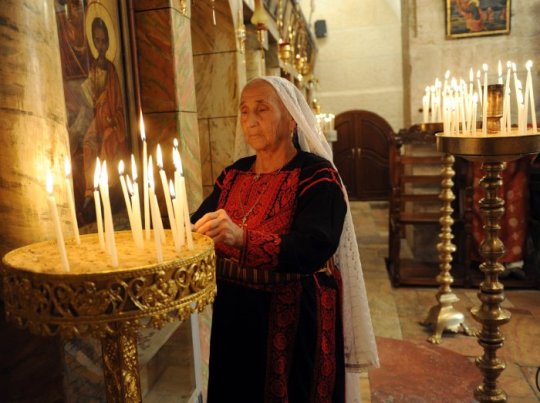
An elderly Palestinian Christian lights a candle during mass in the Greek Orthodox Dormition of the Virgin Mary Church in the West Bank village of Aboud, November 7, 2010. UPI/Debbie Hill
#religion#christianity#orthodoxy#greek orthodox#christians#palestinian christians#women#people#west bank#palestine#divinum-pacis
189 notes
·
View notes
Text

This extremely detailed 19th-century icon depicting various religious scenes is a miniature representation of the traditional icon screen, also known as the iconostasis, which is used to separate the nave from the sanctuary in Russian Orthodox churches. The icon features six registers separated into smaller images of the prophets, saints, and church feasts. The scenes of the Synaxis of the Archangels, the Pokrov of the Mother of God, the Trinity, the Beheading of St John the Forerunner, the Dormition, and the image of St. Nicholas are placed between the Deacon's Doors. The main Orthodox church feasts can be seen in the second register. As for the compositional center of this antique piece, it is reserved for the image of Christ Enthroned. The icon is currently part of a private collection located in Germany.
#iconostasis#antiques#orthodoxart#christianart#religiousart#orthodoxicon#russianicon#russianiconography#iconography
689 notes
·
View notes
Text
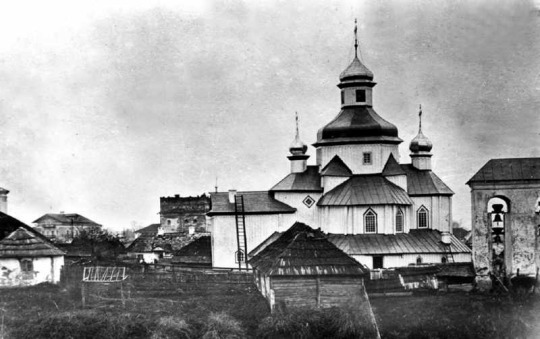
The Dormition Church in Ostroh, Ukraine. 19th century photograph.
#19th century#ukrainian history#old photo#black and white#church#christianity#19th century photography#ostroh#eastern europe#ukraine#christian
27 notes
·
View notes
Text
NEWS: Arrest of Metropolitan Arseny, Abbot of the Holy Dormition of the Svyatogorsk Lavra, Ukraine

On April 24, 2024, the Security Service of Ukraine (SBU) conducted a search in the Holy Dormition Svyatogorsk Lavra of the Ukrainian Orthodox Church, detained the abbot of the Lavra, Metropolitan Arseniy, and informed him that he is suspected of disseminating information about the movement or location of the Armed Forces of Ukraine, which is punishable by up to 8 years in prison. The accusation is based on the fact that in September 2023, during a sermon in the church, Vladyka allegedly told the faithful about the locations of checkpoints of the Armed Forces of Ukraine near the Lavra and thus disseminated information of a military nature.(1)
After that, Vladyka Arseny was taken by the SBU to the city of Slavyansk, and then to the city of Dnipro.
That very night, the night of April 24-25, 2024, the Oktyabrsky District Court in the city of Dnipro fully upheld the prosecutor's petition and chose a measure of restraint for Metropolitan Arseny in the form of detention for a period of 60 days. The court ignored the defense's petition for house arrest and the possibility of applying bail. At about three o'clock in the morning, Vladyka was sent immediately from the courtroom to the Dnipro pre-trial detention center.
Metropolitan Arseny suffers from serious illnesses and therefore requires constant medical supervision and treatment, which cannot be provided in the conditions of the pre-trial detention center. The arrest of Vladyka is a blatant violation of human rights and is aimed at forcibly removing Metropolitan Arseny from fulfilling the obedience of the abbot of the Svyatogorsk Lavra, which is one of the main spiritual centers of Ukraine, and isolating him.
The brethren of the Svyatogorsk Lavra prayerfully support Metropolitan Arseny, await his speedy release from arrest, and consider the accusations against Vladyka artificial and far-fetched. Despite the large-scale destruction of the monastery, with the support of Vladyka Arseny, divine services are held in the Lavra to this day, and the brethren of the monastery continue to carry out their monastic podvig every day. Also, a large number of people who lost their own homes as a result of hostilities live in the Lavra.
Metropolitan Arseny is, as it were, the heart of the Lavra, without him it is impossible to imagine the Svyatogorsk monastery. For all of us living in the Lavra, Vladyka Arseny is an indispensable spiritual mentor, administrator, and man of prayer. Therefore, the isolation of Vladyka is a heavy blow for all of us.
We thank all of you, dear brothers and sisters, for your prayers and words of support for the Holy Dormition Svyatogorsk Lavra of the Ukrainian Orthodox Church.
(1) WHAT MOTIVATED THE ARREST OF THE MOST REVEREND METROPOLITAN ARSENY?

The checkpoint Vladyka mentioned in that sermon was explicitly set up in the neighboring village to block pilgrims from coming to the celebration of the Synaxis of the Saints of the Svyatogorsk Lavra last fall. It functioned for only one or two days - for that particular purpose. Vladyka lamented that people were being prevented from coming to worship at the Lavra and from bringing the monks and refugees badly-needed humanitarian aid. Busloads of people from far away, including families with children, were held up and turned away.
15 notes
·
View notes
Photo
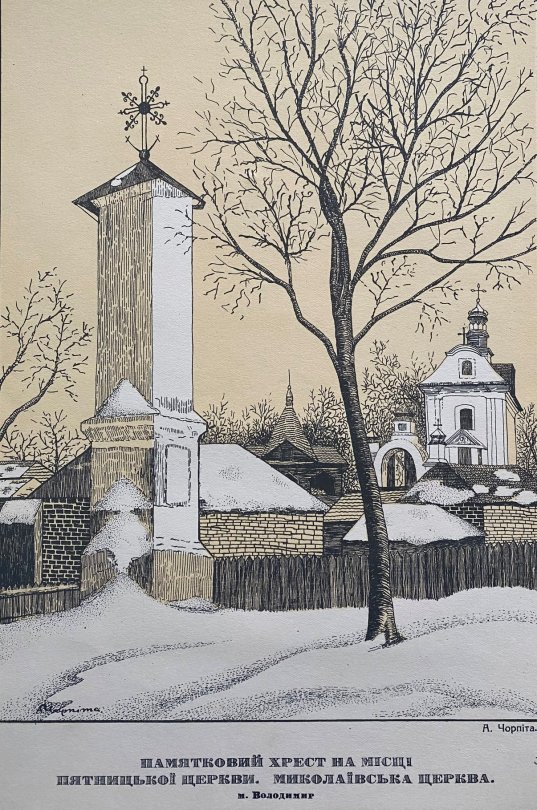

St.Nicholas` Church and The Holy Dormition Church in Volodymyr, Volyn Region, by Antoniy Chorpita, 1932
#The Holy Dormition Church#St.Nicholas` Church#Volodymyr#Volyn#Ukrainian art#Ukrainian graphic#Antoniy Chorpita#Ukrainian Architecture#Ukraine#church#1930s
69 notes
·
View notes
Text

The Holy Church of the Dormition of the Virgin Mary in Athens. A beautiful Orthodox Church. Took some time to pray before leaving this wonderful place of Christian Architecture.
#christianblog#christian living#christianity#jesussaves#Orthodox Church#orthodox#Christian architecture#theology#christian thoughts#orthodox architecture
35 notes
·
View notes
Text
Feast of the Assumption of the Blessed Virgin Mary

Today, August 15, Catholics and many other Christians celebrate the feast of the Assumption of the Blessed Virgin Mary.
This significant feast day recalls the spiritual and physical departure of the mother of Jesus Christ from the earth, when both her soul and her body were taken into the presence of God.
Venerable Pope Pius XII confirmed this belief about the Virgin Mary as the perennial teaching of the Church when he defined it formally as a dogma of Catholic faith in 1950, invoking papal infallibility to proclaim “that the Immaculate Mother of God, the ever-Virgin Mary, having completed the course of her earthly life, was assumed body and soul into heavenly glory.”
His Apostolic Constitution “Munificentissimus Deus” (Most Bountiful God), which defined the dogma, contained the Pontiff's accounts of many longstanding traditions by which the Church has celebrated the Assumption throughout its history.
The constitution also cited testimonies from the early Church fathers on the subject and described the history of theological reflection on many Biblical passages, which are seen as indicating that Mary was assumed into heaven following her death.
Although the bodily assumption of Mary is not explicitly recorded in Scripture, Catholic tradition identifies her with the “woman clothed with the sun” who is described in the 12th chapter of the Book of Revelation.
The passage calls that woman's appearance “a great sign that appeared in heaven, indicating that she is the mother of the Jewish Messiah, has the moon under her feet, and on her head, a crown of twelve stars.”
Accordingly, Catholic iconography of the Western tradition often depicts the Virgin Mary's assumption into heaven in this manner.
Eastern Christians have also traditionally held Mary's assumption into heaven as an essential component of their faith.
Pius XII cited several early Byzantine liturgical texts, as well as the eighth-century Arab Christian theologian St. John of Damascus, in his own authoritative definition of her assumption.
“It was fitting,” St. John of Damascus wrote in a sermon on the assumption, “that she, who had kept her virginity intact in childbirth, should keep her own body free from all corruption even after death and that she, who had carried the creator as a child at her breast, should dwell in the divine tabernacles.”
In Eastern Christian tradition, the same feast is celebrated on the same calendar date, although typically known as the Dormition ("falling asleep") of Mary.
Eastern Catholic celebration of the Dormition is preceded by a two-week period of fasting, which is similar to Lent.
Pius XII, in “Munificentissimus Deus,” mentioned this same fasting period as belonging to the traditional patrimony of Western Christians as well.
The feast of the Assumption is always a Holy Day of Obligation for both Roman and Eastern-rite Catholics on which they are obliged to attend Mass or Divine Liturgy.
#Feast of the Assumption of the Blessed Virgin Mary#Assumption of the Blessed Virgin Mary#Virgin Mary#Dormition of Mary#Dormition
30 notes
·
View notes
Note
in a response to an old ask about whether or not mary was represented by/a representation of yonic symbolism and imagery and you responded by asking if she should be. could you expand more this? im very interested as ive been thinking about the roles that mythologized women are thrust into
then and now i remain conscious of mary's yonic figuration, of her motherhood, of her womb which swallows her whole, or her virginity that precedes even her name. mary's femininity matters, and god having a mother matters, and sexual difference matters. yet these are things generated at limits, and i want to name those limits. sexual difference, negotiated via a biblical one-sex model, renders then-bodies illegible to now-bodies. the category of woman is an unstable thing. the aporia of the archive haunts us: we don't hear from mary, only from men who colonize her as theotokos, who do not let her die as the dormitioned. even the use of the term 'yonic,' is fraught—how are you attaching it to penetration? to fertility? how wary are you of the fact that mary herself would never use that term or any cognate of it?
buried by the archive, by her son, by the womb. by every church father. by another father, too—one with a law. by whatever it means to be nonphallic (lacan would say: to be the phallus). when i ask if mary should be yonic, i am not asking if it is right to conjugate her as that or not as that. i am asking if it is right to conjugate her at all
#saidiya hartman venus in two acts: you must read#good question i loved thinking thru this again#ask
12 notes
·
View notes
Text
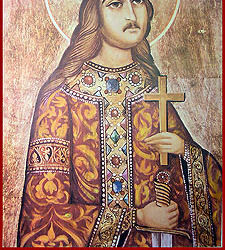
Saint Stephen succeeded his father, Prince Bogdan II, as Prince of Moldavia on April 12, 1457 soon after the latter was murdered. He defended his country against the Turks, and he also built many churches and monasteries. (Painted Churches of Bukovina)
Saint Stephen the Great was a spiritual son of Saint Daniel the Hesychast (December 18), who told him that if he built a church after every battle he would be victorious in all his wars. Following Saint Daniel’s counsel, Saint Stephen won forty-seven battles and built forty-eight churches or monasteries. He also built the Putna Dormition Monastery in northern Moldavia in 1466 when Saint Daniel urged him to do so.
In 1476, Saint Stephen lost the battle of Razboieni to the Turks. He went to visit Saint Daniel at the Voronets Monastery to ask whether or not he should surrender the country to the Moslems. Saint Daniel told him not to surrender, because he would soon win a decisive victory. Saint Daniel also told him that after he had saved the nation, Stephen should build a monastery in honor of Saint George at that place. Having faith in Saint Daniel’s prophecy, Stephen went forth with his army and drove the Turks from the country.
Saint Stephen fell asleep in the Lord on July 2, 1504, and was buried at the Putna Monastery. He was glorified by the Orthodox Church of Romania in 1992.
#romania#rural romania#traditionalism#bucovina painted churches#orthodox christianity#saint stephen#christianity#faith#bukovina#romania churches#churches of romania#moldavia#moldova#Daniel the Hesychast#monasteries#eastern orthodox#eastern europe#europe#defending europe#prince of moldavia
54 notes
·
View notes
Text

Palestinian Christians worship in the Greek Orthodox Dormition of the Virgin Mary Church in the West Bank village of Aboud, November 7, 2010. UPI/Debbie Hill
#religion#christianity#orthodoxy#greek orthodox#christians#children#people#palestinian christians#west bank#palestine#divinum-pacis
57 notes
·
View notes
Text

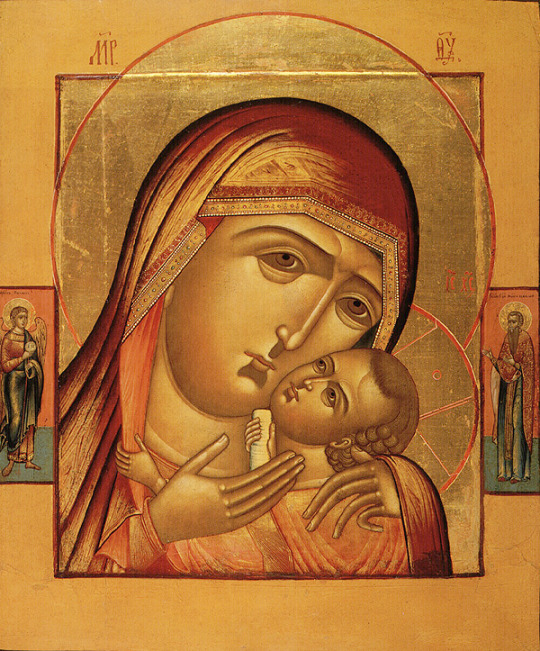
Bright Wednesday
Commemorated on May 8
On Bright Wednesday we commemorate the holy monastic Fathers who have shone forth on the God-trodden Mt Sinai. This commemoration was established by the Church of Russia on April 17, 1997.
Saints Theocharis and Apostolos are local saints of Arta. The first fell asleep in 1845 and the second a little later. Saint Theocharis was a teacher at Komboti, Arta. The icons of these saints are in the church of Holy Wisdom (Hagia Sophia) in Arta.
The Kasperov Icon of the Most Holy Theotokos is also commemorated today. Tradition says that this holy icon had been brought to Cherson from Transylvania by a Serb at the end of the sixteenth century. Passing down from parent and child, the icon had come to a certain Mrs. Kasperova of Cherson in 1809.
One night in February of 1840 she was praying, seeking consolation in her many sorrows. Looking at the icon of the Virgin, she noticed that the features of the icon, darkened by age, had suddenly become bright. Soon the icon was glorified by many miracles, and people regarded it as wonderworking.
During the Crimean War (1853-1856), the icon was carried in procession through the city of Odessa, which was besieged by enemy forces. On Great and Holy Friday, the city was spared. Since that time, an Akathist has been served before the icon in the Dormition Cathedral of Odessa every Friday.
The icon is painted with oils on a canvas mounted on wood. The Mother of God holds Her Son on her left arm. The Child is holding a scroll. Saint John the Baptist (Janurary 7) is depicted on one side of the icon, and Saint Tatiana (January 12) on the other. These were probably the patron saints of the original owners of the icon.
The Kasperov Icon is commemorated on October 1, June 29, and Bright Wednesday.
[Text from OCA]
6 notes
·
View notes